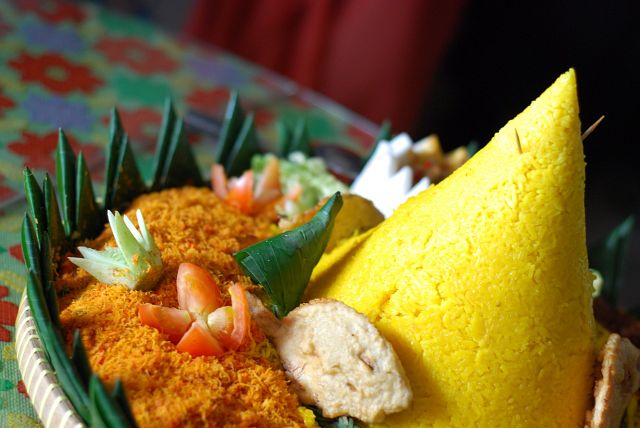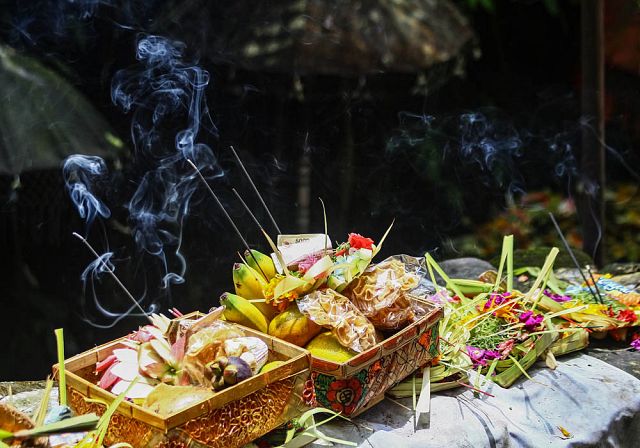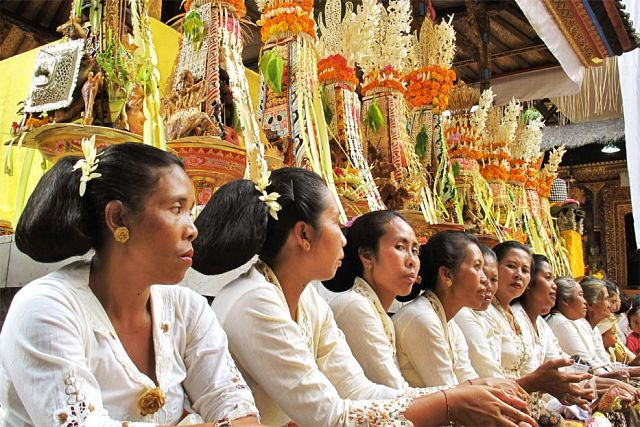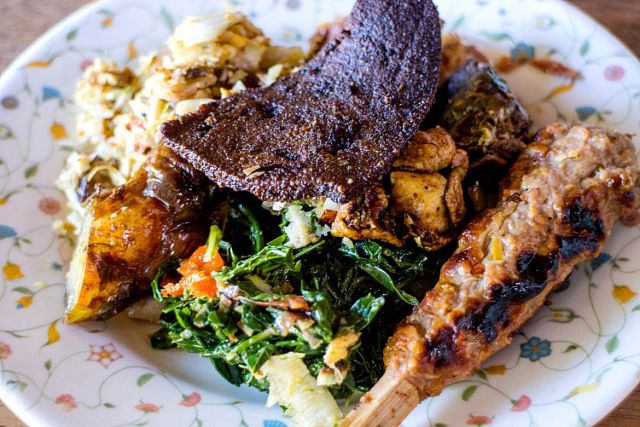Yellow Kuningan Celebration
Kuningan marks the end of the extended Galungan festivities. The name 'Kuningan' comes from the Indonesian word 'kuning,' which means yellow. This color is sacred to Balinese Hindus as it symbolizes the supreme god-creator, Brahma.
During Kuningan, it is customary to eat yellow rice known as 'nasi kuning.' Making it is quite simple - turmeric powder is added to the rice while cooking.

Kuningan involves renewing all the offerings to the gods and ancestral spirits that were made on the first day of Galungan: fruits and rice cakes are placed on the altar once again.

On this day, all vehicles also 'receive gifts'; baskets with offerings are placed on them, and protective decorations made from bamboo leaves are hung.

On the day of Kuningan, extensive ceremonies are conducted before noon. For this purpose, families gather together once again, performing rituals in their family temples.

After the rituals are concluded, Balinese people gather for a festive meal. The mandatory dishes that must appear on every Balinese table on Kuningan day are, of course, yellow rice and 'lawar.' Lawar is a meat dish (usually pork), served with vegetables and herbs. Blood is also used in its preparation. During the festive days, the blood of sacrificial animals that were slaughtered during the ceremony is used.

If you want to experience the full force of the celebration while immersing yourself in an authentic atmosphere, we recommend visiting the village of Tukad Mungga during Kuningan. It is located in the north of the island, near the former island capital, the city of Singaraja. While solemn ceremonies for Kuningan take place in various parts of the island, the most interesting tradition of celebrating the holiday was developed by the village residents.

During the Kuningan festival, a spectacular ritual known as 'mekotek' takes place here. Almost all the men of Tukad Mungga participate armed with long bamboo poles and sprinkled with water from local holy springs.
On the village streets, a unique theatrical reenactment occurs on this day, portraying the encounter between the residents and soldiers of the Mengwi Kingdom after their triumphant battle in a medieval war against the Blambangan Kingdom.

Groups of men from 12 different districts of the village, dressed in traditional attire, construct bamboo spire-like structures resembling pyramids, upon which the bravest and most agile climb. The mekotek event symbolizes the village's liberation from any form of evil for the nearest calendar cycle, which according to the Pawukon calendar consists of 210 days.

Interestingly, when the Dutch colonial administration banned the mekotek ritual in 1915, a real catastrophe struck the village - widespread illnesses and other disasters befell the people, resulting in numerous human casualties. Afterward, the village elders insisted on the resumption of the ritual.

This marks the end of the ten-day celebration and the beginning of a new cycle of life, as Kuningan is the day when the gods and ancestors of the Balinese people bestow upon them physical and spiritual prosperity.
If you want to witness the ceremonies associated with Kuningan, ask your Balinese neighbors about the events expected during Kuningan in their village or banjar, as the timing and order of events may vary in different villages and banjars.

You can add one right now!